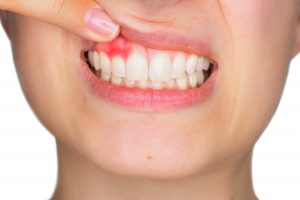
Throughout the day, a tug of war takes place inside our mouths.
On one team are dental plaque—a sticky, colorless film of bacteria—plus foods and drinks that contain sugar or starch (such as milk, bread, cookies, candy, soda, juice, and many others). Whenever we eat or drink something that contains sugar or starch, the bacteria use them to produce acids. These acids begin to eat away at the tooth’s hard outer surface, or enamel.
On the other team are the minerals in our saliva (such as calcium and phosphate) plus fluoride from toothpaste, water, and other sources. This team helps enamel repair itself by replacing minerals lost during an “acid attack.” Our teeth go through this natural process of losing minerals and regaining minerals all day long.
When a tooth is exposed to acid frequently—for example, if you eat or drink often, especially foods or drinks containing sugar and starches—the repeated cycles of acid attacks cause the enamel to continue to lose minerals. People who drink coffee throughout the day, with creamer and/or sugar in it usually get persistent tooth decay. Beverages that are already very acidic, like soft drinks (even diet sodas), sports drinks, and power drinks can cause rampant tooth decay too.
If you, your family or friends need dental care, we would be honored to provide you with state-of-the-art dental care in our modern dental practice. Refer someone you love to someone you trust!
Presented as a service to the community by Doctors Hoover and Yanda,
39 Milford Drive, Hudson, Ohio 44236. 330-650-0360. www.drshooverandyanda.com


 People usually don’t show signs of gum disease until they are in their 30s or 40s. Men are more likely to have gum disease than women. Although teenagers rarely develop periodontitis, they can develop gingivitis, the milder form of gum disease. Most commonly, gum disease develops when plaque is allowed to build up along and under the gum line.
People usually don’t show signs of gum disease until they are in their 30s or 40s. Men are more likely to have gum disease than women. Although teenagers rarely develop periodontitis, they can develop gingivitis, the milder form of gum disease. Most commonly, gum disease develops when plaque is allowed to build up along and under the gum line.